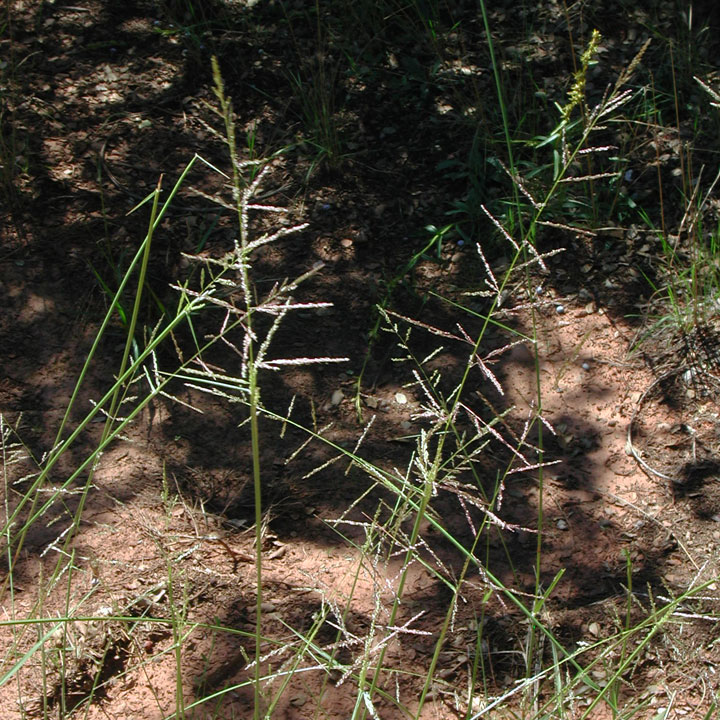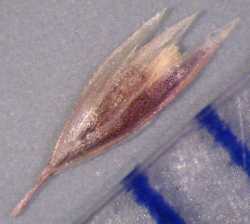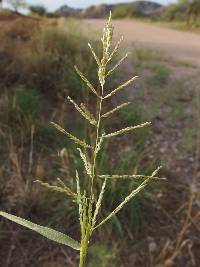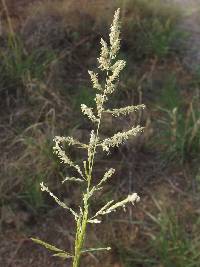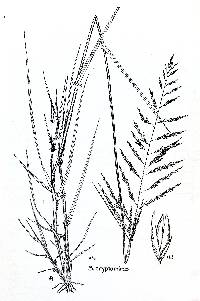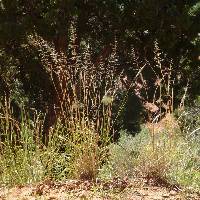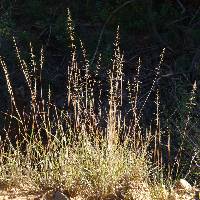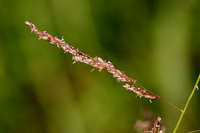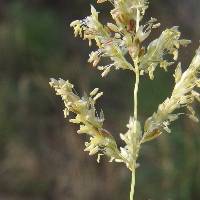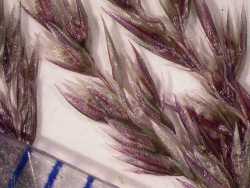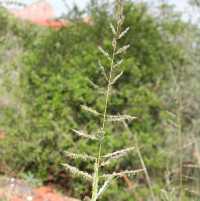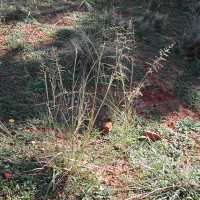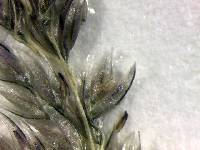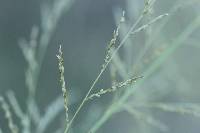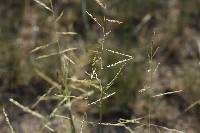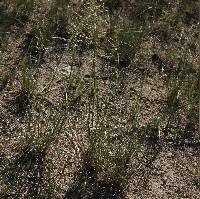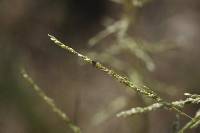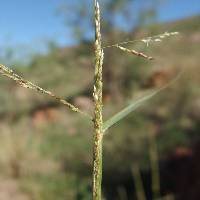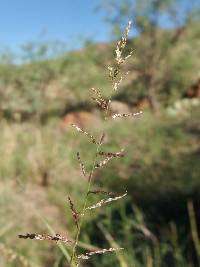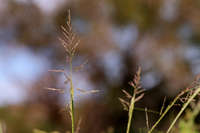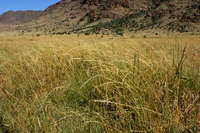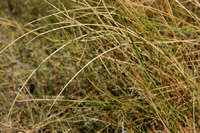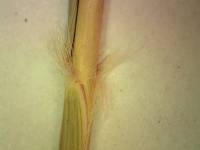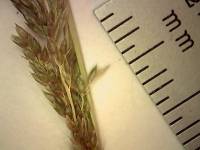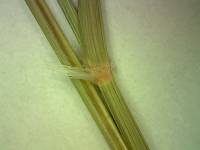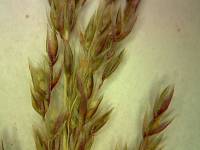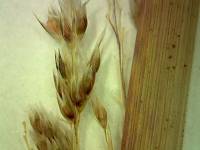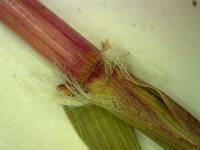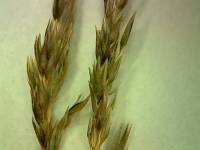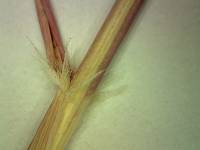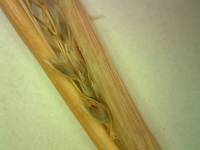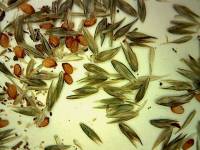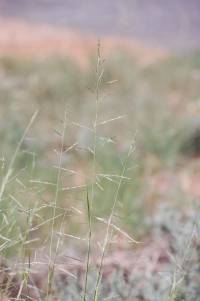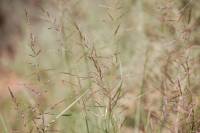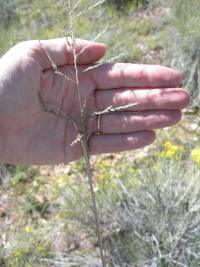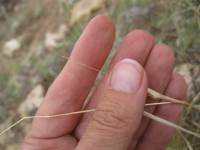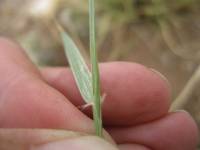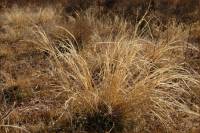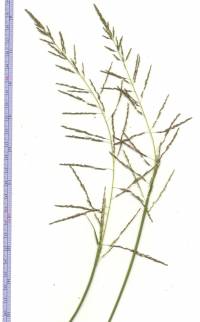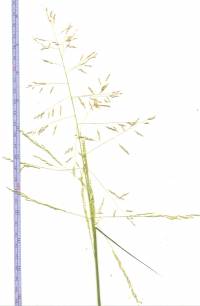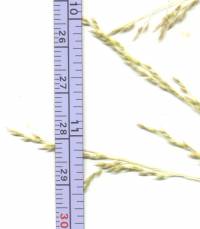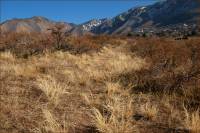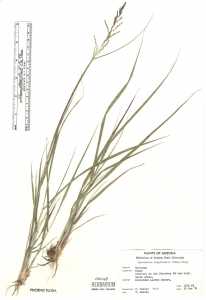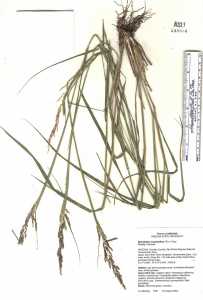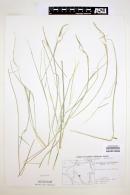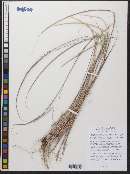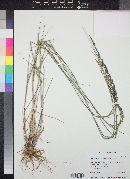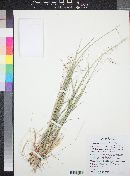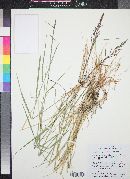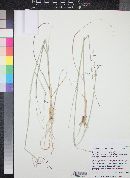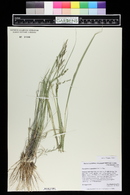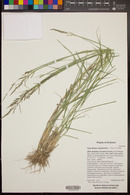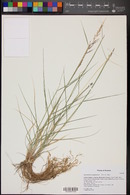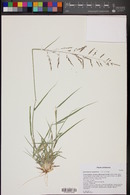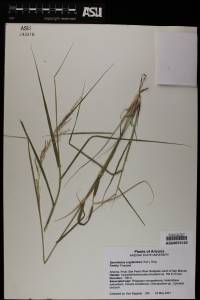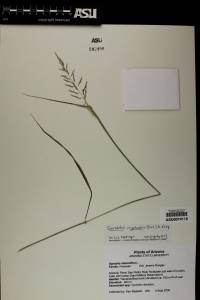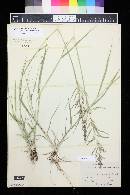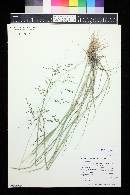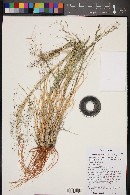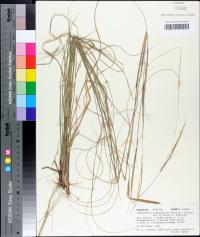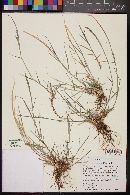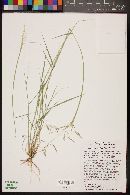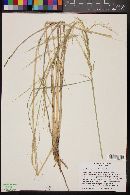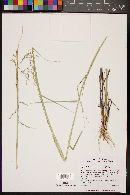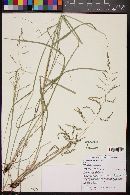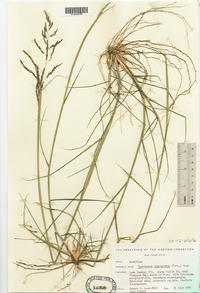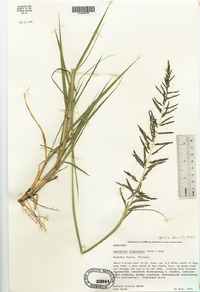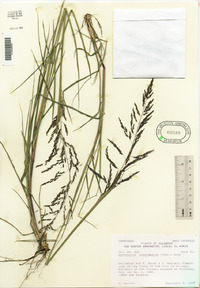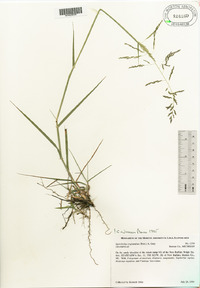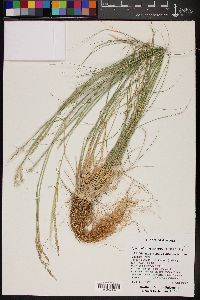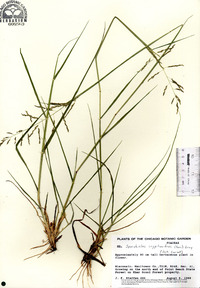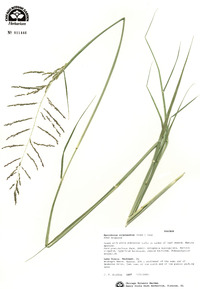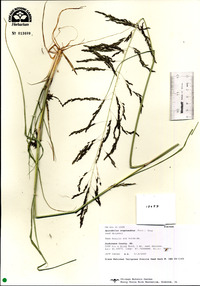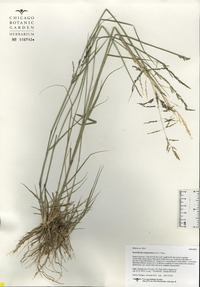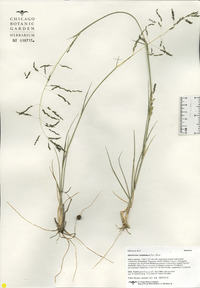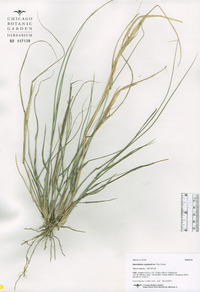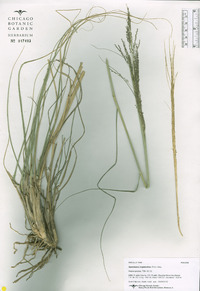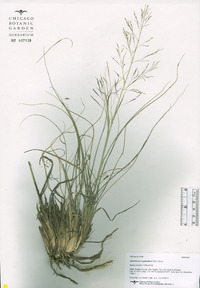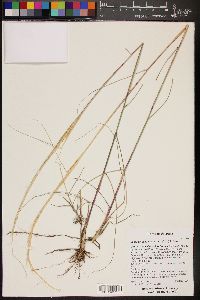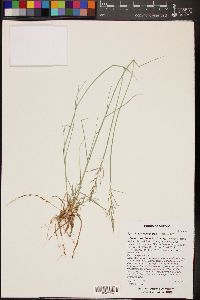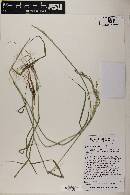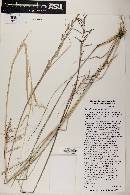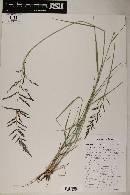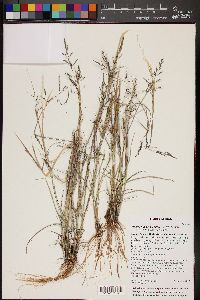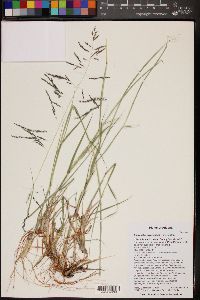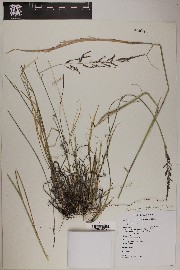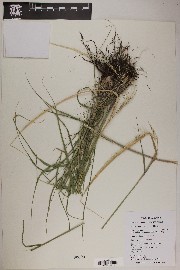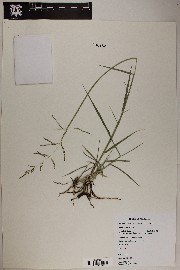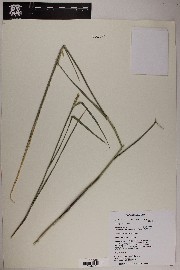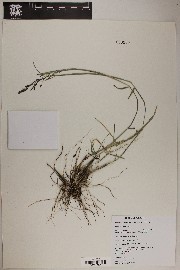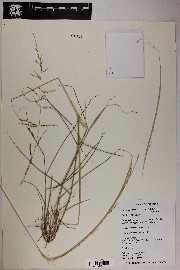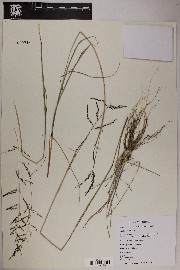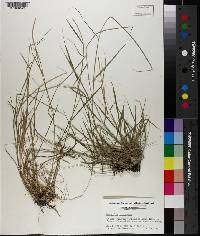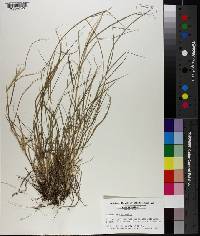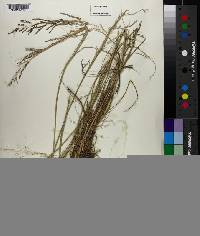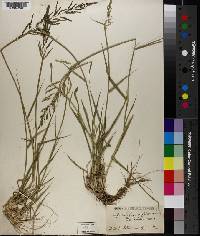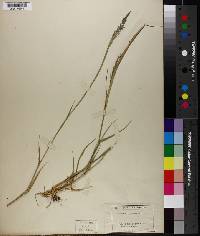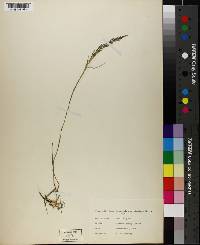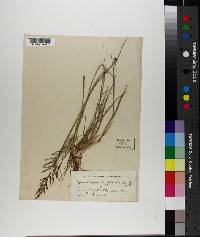
|
|
|
|
Family: Poaceae
Sand Dropseed, more... (es: zacate de arena, zacate encubierto)
[Agrostis cryptandra Torr., moreSporobolus cryptandrus subsp. fuscicola (Hook.) E.K. Jones & Fassett, Sporobolus cryptandrus subsp. fuscicolor , Sporobolus cryptandrus var. fuscicola (Hook.) Pohl, Sporobolus cryptandrus var. involutus Farw., Sporobolus cryptandrus var. occidentalis E.K. Jones & Fassett, Sporobolus cryptandrus var. typicus (Torr.) E.K. Jones & Fassett, Sporobolus cryptandrus var. vaginatus , Sporobolus subinclusus Phil., Sporobolus subinclusus var. expansus Parodi, Vilfa cryptandra (Torr.) Trin., Vilfa tenacissima var. fuscicolor Hook., Vilfa triniana Steud.] |
Plants perennial; cespitose, not rhizomatous, bases not hard and knotty. Culms 30-100(120) cm tall, 1-3.5 mm thick, erect to decumbent. Sheaths rounded below, glabrous or scabridulous, margins sometimes ciliate distally, apices with conspicuous tufts of hairs, hairs to 4 mm; ligules 0.5-1 mm; blades (2)5-26 cm long, 2-6 mm wide, flat to involute, glabrous abaxially, scabridulous to scabrous adaxially, margins scabridulous; flag blades nearly perpendicular to the culms. Panicles 15-40 cm long, 2-12(14) cm wide, longer than wide, initially contracted and spikelike, ultimately open and narrowly pyramidal; rachises straight, erect; lower nodes with 1-2(3) branches; primary branches 0.6-6 cm, appressed, spreading, or reflexed to 130° from the rachis, without spikelets on the lower 1/8-1/4, lower branches longest, included in the uppermost sheath; secondary branches appressed; pulvini glabrous; pedicels 0.1-1.3 mm, appressed, glabrous or scabridulous. Spikelets 1.5-2.5(2.7) mm, brownish, plumbeous, or purplish-tinged. Glumes unequal, linear-lanceolate to ovate, membranous; lower glumes 0.6-1.1 mm; upper glumes 1.5-2.7 mm, at least 2/3 as long as the florets; lemmas 1.4-2.5(2.7) mm, ovate to lanceolate, membranous, glabrous, acute; paleas 1.2-2.4 mm, lanceolate, membranous; anthers 0.5-1 mm, yellowish to purplish. Fruits 0.7-1.1 mm, ellipsoid, light brownish to reddish-orange. 2n = 36, 38, 72. Sporobolus cryptandrus is a widespread North American species, extending from Canada into Mexico. It grows in sandy soils and washes, on rocky slopes and calcareous ridges, and along roadsides in salt-desert scrub, pinyon-juniper woodlands, yellow pine forests, and desert grasslands. Its elevational range is 0-2900 m. FNA 2003, Gould 1980 Common Name: sand dropseed Duration: Perennial Nativity: Native Lifeform: Graminoid General: Erect, tufted perennial grass with round, unbranched stems, 30-100 cm tall. Vegetative: Blades 2-8 mm wide, 5-20 cm long, flat to involute, the lower surfaces glabrous, upper surfaces and margins slightly rough to the touch; flag blades nearly perpendicular to the culms; sheaths rounded below, glabrous or roughened, the margins sometimes cil Inflorescence: Terminal panicle partially included in sheath, initially contracted and spikelike, ultimately open and narrowly pyramidal, to 25 cm long and 16 cm wide; spikelets are pale to lead colored, 2 mm long and 1-flowered; lower glume one-third to one-half as long as lemma and palea; upper glume as long as the lemma and palea; lemmas 2 mm, ovate to lanceolate. Caryopsis ellipsoid, light brownish to reddish-orange, 1 mm. Ecology: Found on sandy soils of dry plains, slopes, and washes, often in open ground, below 7,000 ft (2134 m); flowers May-September. Distribution: All of CAN and most states in the US except FL and AL, though it is most abundant in the West; south to c MEX and disjunct in S. Amer. Notes: Sporobolus species have single seeded spikelets with unequal glumes, no awns, and most often small seeds which readily fall after maturing hence the common name "dropseed." This species is distinguished by having conspicuous tufts of white hairs at the tops of the sheaths; flag blades nearly perpendicular to the stems; and panicles that are contracted and spikelike when young, then open to a pyramid shape at maturity, but remain partially concealed near the bottom by the sheath. S. contractus is a similar grass but the partially sheathed panicle remains contracted and spikelike at maturity. S. flexuosus is also similar but its panicles are even more open than S. cryptandrus, with widely spreading secondary branches and pedicels (S. cryptandrus has mostly appressed secondary branches and pedicels, even after the primary branches spread open). Also, S. flexuosus has an oblong, not pyramid-shaped inflorescence, with the lowest primary branches being the same length and the middle primary branches. Ethnobotany: Seeds used as food by various Native American groups; ground and mixed into a porridge, combined with with corn meal or used for flour. Synonyms: Agrostis cryptandra, S. cryptandrus subsp. fusicola, S. cryptandrus var. fusicola, S. cryptandrus var. occidentalis Editor: SBuckley 2010, FSCoburn 2014, AHazelton 2015 Etymology: Sporobolus is Greek for "seed-caster,- while cryptandrus is Greek for hidden-male. Perennial tufted herb 30 cm - 1.6 m tall Leaves: having open sheaths with hairless or minutely rough surfaces, sometimes hairy margins, and tufts of hairs to 4 mm long at the tip. The ligules are made of hairs 0.5 - 1 mm long, and the blades are 2 - 26 cm long, 2 - 6 mm wide, flat or with margins rolling toward the upper surface of the midvein (involute), hairless beneath, and minutely rough above and along margins. The flag leaf (uppermost leaf to emerge) nearly forms a right angle to the culm. Inflorescence: terminal, branched (panicle), 15 - 40 cm long, 2 - 14 cm wide, spike-like when young, becoming open and pyramidal, with the lowest branches partially surrounded by the sheath, and the swelling in the branch axils (pulvinus) being hairless. The primary branches are 0.6 - 6 cm long, appressed to spreading or reflexed to 130 degrees from the main axis, with spikelets absent on the lower one-eigth to one-quarter of a branch. Fruit: a light brownish to reddish orange caryopsis, 0.7 - 1.1 mm long, elliptic. Culm: 30 cm - 1.2 m long, erect to decumbent, 1 - 3.5 mm wide, hairless. Spikelets: brownish, lead-colored, or purple-tinged, 1.5 - 2.7 mm long, appressed, borne on a 0.1 - 1.3 mm long and hairless or minutely hairy stalk. Glumes: unequal, narrow lance-shaped to egg-shaped, membranous. The lower glume is 0.6 - 1.1 mm long, and the upper glume is 1.5 - 2.7 mm long. Florets: usually one per spikelet, with yellowish to purplish anthers 0.5 - 1 mm long. Lemma: 1.4 - 2.7 mm long, egg-shaped to lance-shaped with pointed tip, membranous, hairless. Palea: 1.2 - 2.4 mm long, lance-shaped, membranous, hairless, two-veined, often splitting between the veins when mature. Similar species: Sporobolus neglectus and Sporobolus vaginiflorus are annuals that are easily distinguished by their inflated sheaths. Sporobolous compositus var. compositus, Sporobolus heteropepis, and Sporobolus clandestinus all have spikelets that are longer than 3 mm. Flowering: mid June to mid September Habitat and ecology: Frequent in disturbed sandy soil, sparse black oak savannas on sandy soil, and near beaches of Lake Michigan in lightly disturbed soil. Occurence in the Chicago region: native Etymology: Sporobolus comes from the Greek words sporos, meaning seed, and ballein, meaning "to cast forth." Cryptandrus means "with hidden flowers." Author: The Morton Arboretum Dr. David Bogler, USDA NRCS PLANTS Database Perennials, Terrestrial, not aquatic, Stems nodes swollen or brittle, Stems erect or ascending, Stems caespitose, tufted, or clustered, Stems terete, round in cross section, or polygonal, Stem internodes hollow, Stems with inflorescence less than 1 m tall, Stems, culms, or scapes exceeding basal leaves, Leaves mostly cauline, Leaves conspicuously 2-ranked, distichous, Leaves sheathing at base, Leaf sheath mostly open, or loose, Leaf sheath smooth, glabrous , Leaf sheath hairy, hispid or prickly, Leaf sheath hairy at summit, throat, or collar, Leaf sheath and blade differentiated, Leaf blades linear, Leaf blades 2-10 mm wide, Leaf blade margins folded, involute, or conduplicate, Leaf blades mostly glabrous, Leaf blades more or less hairy, Leaf blades scabrous, roughened, or wrinkled, Ligule present, Ligule a fringe of hairs, Inflorescence terminal, Inflorescence an open panicle, openly paniculate, branches spreading, Inflorescence solitary, with 1 spike, fascicle, glomerule, head, or cluster per stem or culm, Inflorescence branches more than 10 to numerous, Flowers bisexual, Spikelets pedicellate, Spikelets laterally compressed, Inflorescence or spikelets partially hidden in leaf sheaths, subtended by spatheole, Spikelet less than 3 mm wide, Spikelets with 1 fertile floret, Spikelets solitary at rachis nodes, Spikelets all alike and fertille, Spikelets bisexual, Spikelets disarticulating above the glumes, glumes persistent, Rac hilla or pedicel glabrous, Glumes present, empty bracts, Glumes 2 clearly present, Glumes distinctly unequal, Glumes shorter than adjacent lemma, Glumes 1 nerved, Lemmas thin, chartaceous, hyaline, cartilaginous, or membranous, Lemma similar in texture to glumes, Lemma 1 nerved, Lemma glabrous, Lemma apex acute or acuminate, Lemma awnless, Lemma straight, Palea present, well developed, Palea membranous, hyaline, Palea about equal to lemma, Palea 2 nerved or 2 keeled, Stamens 3, Styles 2-fid, deeply 2-branched, Stigmas 2, Fruit - caryopsis, Caryopsis ellipsoid, longitudinally grooved, hilum long-linear.
Tufted perennial (sometimes blooming the first year) 3-10 dm; lvs flat or drying involute, 2-6 mm wide, tapering to a long point, the lower sheaths overlapping; sheaths with a conspicuous tuft of long white hairs on each side at the top; panicle ovoid or pyramidal, mostly 10-20 נ2.5-5 cm, its branches mostly alternate or irregularly disposed, spikelet-bearing to near the base; spikelets cleistogamous, pale or olivaceous; glumes acute, the first to about half as long as the broader second one, which about equals the lemma; lemma about equaling the palea; anthers ca 0.5 mm; 2n=18, 36, 72. Dry, especially sandy soil; widespread in w. and c. U.S. and nearby Can. and Mex., e. irregularly to Que., Me., N.J., and O. Doubtfully divisible into vars. Most of our plants have spikelets 2-3 mm in an exserted panicle with spreading branches; these have been called var. fuscicolor (Hook.) Pohl, a name based on plants from Wash. Toward the w. part of our range, and w. to the Pacific, the common (and nomenclaturally typical) phase has spikelets 1.4-2 mm in a panicle with the lower part included in the enlarged and inflated upper sheath, and the panicle-branches are more ascending. Gleason, Henry A. & Cronquist, Arthur J. 1991. Manual of vascular plants of northeastern United States and adjacent Canada. lxxv + 910 pp. ©The New York Botanical Garden. All rights reserved. Used by permission. From Flora of Indiana (1940) by Charles C. Deam Infrequent in dry, sandy soil in the area shown on the map. The specimen from Lawrence County was found in an old stone quarry and the Marion County specimen was found in a waste place on North Meridian Street in Indianapolis. I regard these plants as waifs. The fact that the panicle sometimes remains in the sheath and does not expand has caused a form to be named. I am following Hitchcock, considering the form to be without taxonomic significance. …… Indiana Coefficient of Conservatism: C = 4 Wetland Indicator Status: FACU |
|
|
|

